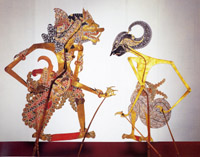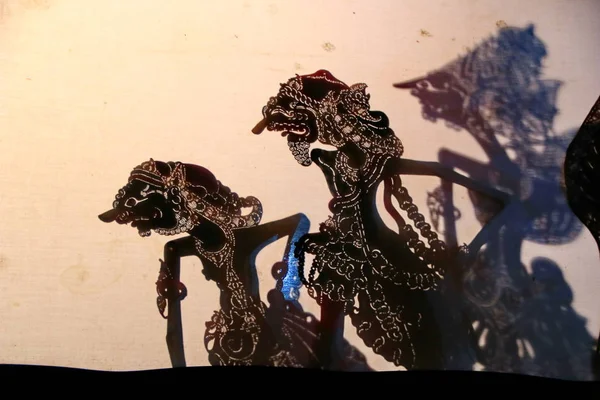

There are two theories concerning the roots of Javanese shadow theatre. Add to Favorites Shadow Theater, Shadow. See more ideas about indonesian art, art lessons, shadow puppets.In 1957 this building was delivered to Lembaga Kebudayaan Indonesia (Institute of Indonesian Culture) and on 17 September 1962 it was delivered to the Ministry of Education and Culture of the Republic of Indonesia, which later was delivered to the DKI Jakarta Administration on 23 June 1968 to be made Shadow Puppet Museum, which inauguration was carried out on 13 August 1975.Indonesian Shadow Puppet / Wayang Purwa, framed, leather puppet, hide puppet, created in Indonesia, folk art, shadowbox Authentos 5 out of 5 stars (187) 42.75. The OriginsExplore Quamesha Springfields board 'Indonesia School project' on Pinterest.
MiettinenThe four oldest cycles, dealing with the ancient history of Java, are collectively named wayang purwa ( purwa: primeval, original, ancient). Story MaterialThe noble Prince Panji Jukka O. The Balinese puppets still bear strong resemblances to the so-called wayang-style reliefs in East Javanese temples, discussed above, which are believed to have shared a common style with the contemporary East Javanese shadow puppets.Present-day Javanese shadow puppets are, in turn, believed to have evolved into their extremely elongated and almost non-figurative style during the period of Muslim rule, thus reflecting Islam’s ban on making a human image. In the East Javanese period, shadow theatre is believed to have been adopted by the Hindu courts of Bali during the long process of its Indianisation. This is often supported by the fact that part of the shadow-theatre repertoire is based on pre-Hindu story cycles, and that all the technical terms of the genre are Javanese and not derived from Sanskrit or other Indian languages.The earliest record confirming the existence of shadow theatre in Central Java dates from AD 907. The other view maintains that Javanese shadow theatre has ancient indigenous roots.
The Structure and Symbolism of the PlayThe play begins with audience scenes in the palaces of opposing monarchs, where the main conflict is presented. However, a lakon follows a more or less standard structure. They serve merely as guides to the performances, including lists of scenes and personages, and descriptions of the action in the actual play, which in practice includes a great deal of improvisation not written in the lakon. Sometimes the lakon are faithful to the original texts, but in many cases the epic heroes have been removed from their authentic contexts and have been written into new, purely Javanese, fantasies.There are several hundred lakon.
Indonesian Shadow Puppetry Full Glory At
The first part symbolises youth, the middle part adulthood, and the final part old age. Javanese theatre thus combines highly noble qualities with earthy comedy and even obscene grotesqueness.On a philosophical, one could almost say an esoteric level, the play, as a whole, symbolises the human life cycle. The themes are highly ethical, and the mood is generally serious, although the whole includes comic scenes with stock clown characters, slapstick, and even topical satire. Finally, the victorious noble hero presents himself in his full glory at the home palace, and the plays usually have happy endings, the obligatory victory of the right. Whilst preparing for battle, the hero will experience many doubts and inner conflicts.The climax is a great battle, which is also a drastic turning point in the action.
The dalang is also responsible for the rituals performed in connection with the play, and he must know by heart the main lakon, which are in a way revived with the addition of much improvisation.The dalang have traditionally had a priest-like role, and the profession has passed on from father to son. The performance of the dalang is the focus of the whole, often 10-hour-long performance, which traditionally begins at 9 p.m. DalangWayang kulit is, to a great degree, the art of the narrator.
Each principal character has his or her own musical theme or Leitmotif, and the gamelan drastically accentuates the three decisive turning-points of the performance, changing from the rather low-keyed accompaniment of the beginning to an ever higher pitch and faster tempo towards the end. One set of metallophones carries the recurrent melody, which is elaborated by other metallophones, xylophones, and gong sets, with the drums leading the rhythm, while another set of metallophones gives the dalang his pitch.The gamelan accompaniment is indeed an integral part of the performance. He leads the gamelan, an ensemble of up to thirty musical instruments: gongs, metallophones, xylophones, drums, flutes, zithers, and stringed instruments along with a chorus of female singers. He must also be skilled in recitation, singing, the vocal characterisations of the roles, and the elevated and vulgar levels of the language, along with manipulating the puppets in front of the screen.The dalang also displays expert knowledge of the music so essential to the performance. MiettinenThe dalang thus carries on the ancient oral tradition passing on the main body of classical literature, but at the same time he must be able to improvise and add even the most topical items to the whole.


Semar is basically seen as a god in the guise of a clown, who helps the hero achieve his goal with kindness and humour. The servant clowns assist the noblest heroes, and they are permitted to utter the most daring jokes.The mood of a performance usually becomes intensified when they appear on the screen. With his soft breasts and round bottom, he is regarded as a hermaphrodite, the “father and mother” of his servant sons, the long-nosed Petruk, the limping Gareng, and the shy Bagong. He is far from noble or handsome, but his eyes are those of a wise and kind person.
GununganThe servant clowns have a crucial role as the assistants of the heroes. This is also the case in Indian drama, where the sudraka, a noble-born but lazy Brahman, acts as the king’s adviser. On the other hand, clowns play a central part in numerous forms of theatre in Asia. It is maintained that they are old indigenous deities, which have been adapted to later Indianised mythology.This suggestion is supported by, for example, the stylisation of the Semar character, which differs drastically from the other puppets.
This polarity, however, is not rigid, since both parties include characters with qualities that could belong to the opposing one. The screen is divided into two, the right-hand side being reserved for the good characters, and the left for the evil party. MiettinenThe wayang kulit puppets are opaque, and on the screen they are seen as dark shadows articulated by precise lace-like perforations.


 0 kommentar(er)
0 kommentar(er)
